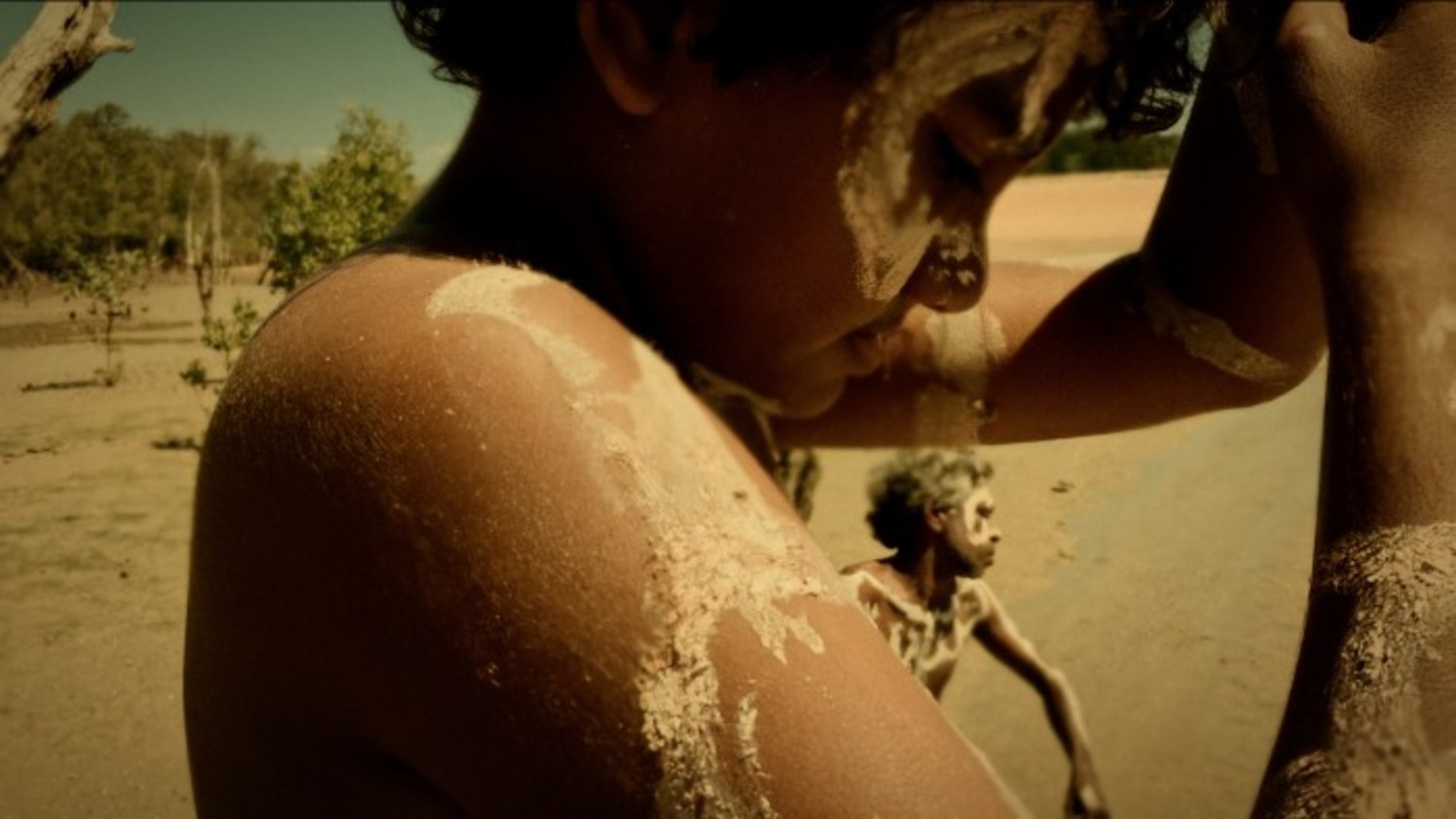Resist Like Woods: Forest Cinema
Forest Cinema in partnership with the Serpentine Galleries, London and its General Ecology project,

Forest and meadow plot between the villages of Hnátnice and Písečná, Orlické Mountains
The Forest Cinema was programmed in partnership with the Serpentine Galleries, London and its General Ecology project, a multidisciplinary platform researching complexity, more-than-humanism, the environment and climate change through publications, exhibitions, study programmes, radio, symposia and live events. Films were selected by Tereza Porybná, Lucia Pietroiusti and Kostas Stasinopoulos. Part of the programme is also Shinzuke Ogawa’s documentary essay Magino Village: A Tale, nominated by Nicola Marzano, head of ICA London cinema programme.
The Future Was Desert, I, II
Sophia Al-Maria, 2016, 5’17
“Deserts possess a particular magic, since they have exhausted their own futures, and are thus free of time.” J.G. Ballard
Sophia Al Maria’s sends her virtual alter-ego on a pilgrimage throughout the Namibian desert, Oman and Australia. Depicting the intricacy between fossil-fuel dependency, wealth, and environmental devastation, Al-Maria creates a set of delirious, post-apocalyptic dreamscapes in which past and future appear as arbitrary temporal references within a complex geopolitical landscape.
Sophia Al-Maria is a Qatar American artist, author and filmmaker. She lives and works in London.
The Mermaids, or Aiden in Wonderland
Karabing Film Collective, 2018, 27‘
Trailer
In the not far future, Europeans can no longer survive for long periods outdoors in a land and seascape poisoned by capitalism, but Indigenous people seem able to. A young Indigenous man, Aiden, taken away when he was just a baby to be a part of a medical experiment to save the white race, is released into the world of his family. As he travels with this father and brother across the landscape he confronts two possible futures and pasts.
Karrabing Film Collective are an Indigenous media group who use filmmaking as a means of activism and self-organization. Through their films and installations, they interrogate the conditions of inequality for Aboriginal people in the Northern Territory and retain connections to land and their ancestors.


Taxonomy Transplated
Peter Nadin a Aimée Toledano, 2012, 11’39
“The plant is rooted in the soil; our knowledge of the plant is rooted in language.”
Peter Nadin
Filmed at the Old Field Farm in upstate NewYork, the home of artist Peter Nadin, Taxonomy Transplanted explores the issues of the subjectivity of language and taxonomy in connection to plants, animals, fruits, landscape and activities on the farm. Since he started farming in 1989, Nadin’s art practice has increasingly overlapped with the day-to-day responsibilities of the farm.
Aiméé Toledano is a New Orelans based artist and documentary filmmaker
Peter Nadin is an american artist, essayist and farmer.
Trapped in a Dream of the Other
Revital Cohen & Tuur Van Balen, 2017, 27‘
“If you’re trapped in the dream of the Other, you’re fucked.” Gilles Deleuze
A camera navigates through an open-air coltan mine in the Eastern region of the Democratic Republic of the Congo. Bespoke pyrotechnics were imported from Liuyang, the epicentre of China’s fireworks industry, and gradually explode following instructions sent from a mobile phone in a London studio. Colourful smoke covers the mine, short-circuiting an existing trade route based on the exchange of minerals and gunpowder. In the background – a misty grey sky; green hills that extend to the horizon and look simultaneously abundant and empty, real and virtual. Coltan is a mineral used in most electronics today and its rareness is a cause of long-lasting conflict in the region. China is one of the main coltan buyers.
Revital Cohen and Tuur Van Balen work across objects, installation and film to explore the process of production as cultural, personal and political practices. They live and work in London.
Linnaeus and Terminate Seed
Pedro Neves Marques, 2017, 15’
Video


Is there a deterministic, evolutionary line connecting modern botany to contemporary transgenics? Gathering botanical drawings by European naturalists in Latin America and Southeast Asia, plant genome representations, contracts and UN documents about transgenic seeds, as well as modern depictions of the reproductive systems of flowers and humans, this short film-essay explores the sexual imaginary of botanists such as Carl Linnaeus to consider the post-natural conditions governing current biotechnology, the colonial management of reproduction, as well the representation and indexation of life forms past and present.
Pedro Neves Marques is a Portuguese filmmaker, visual artist and writer living and working in New York. He works across the themes of colonialism, ecology, biology and technology, politics and sexuality.
Magino Village: A Tale
Šinsuke Ogawa, 1986, 222‘
A monumental and complex film on time and history, painstakingly crafted over more than ten years, and the culmination of Shinsuke Ogawa’s practice of documentary filmmaking. The Magino Village brings together all the ideas and themes developed in the previous works of the collective – farming, the time of the village, the deep relations between the people and the land, the importance of recording oral history, the long culture of dissidence of the farmers, and their resistance against authority. The past and present time of this place is layered through the storytelling of the people, the rendering of village time, the temporality of rice harvests, and the seasons.
Shinsuke Ogawa (1936–1992) is of the most critically celebrated post-war Japanese documentary filmmakers. His twenty films shot over twenty-five years influenced a number of Asian filmmakers by their radical political stance, power of observation and the belief in the close relationship between film and society.

WOODS – Community for Cultivation, Theory and Art
Forest and meadow plot between the villages of Hnátnice and Písečná, Orlické Mountains


